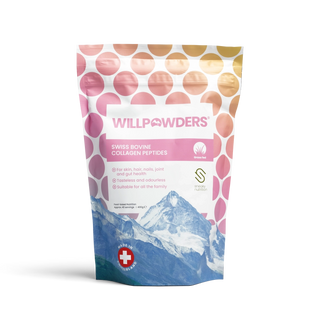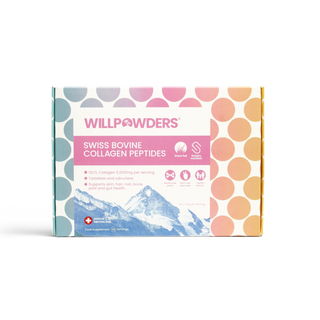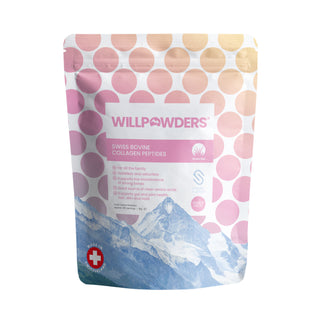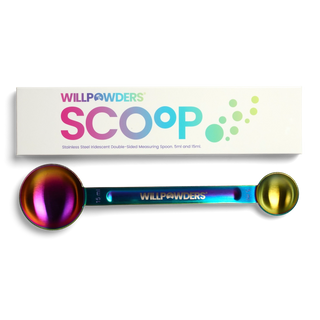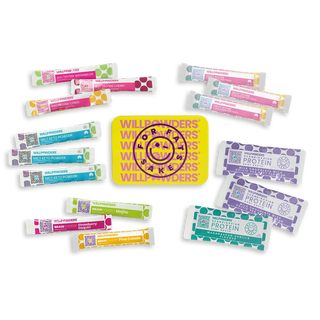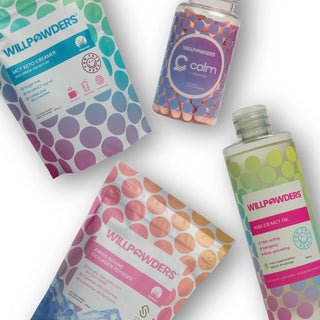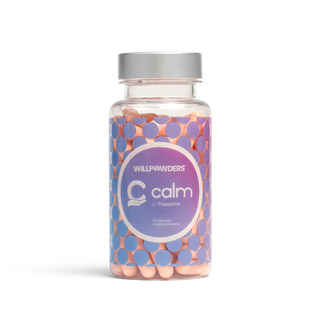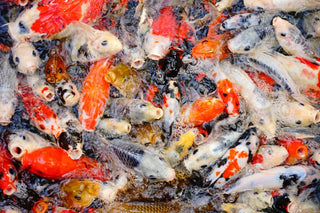
Marine Collagen: They Say Aquaculture, We Say Fish Farm
Collagen 101: The one in which we tell you and the marine collagen industry: if it’s not coming from the seas, it’s a case of tomato/tomatoe, potato/potatoe - let’s call the whole thing exactly what it is - sourced from a fish farm.
Now, you may need to sit down for this one: Marine collagen might not come from the salty seas at all.
In fact, once you start to read up on the spec of marine collagen as supplied to marine collagen businesses by wholesale manufacturers, the two fish that are mainly used for marine collagen peptides are freshwater fish - tilapia and pangasius. Say, who, say, what? And, they’ve never swum free in an ocean and they’d be lucky to ever have seen a river
To be fair to pangasius, that bad boy can live in both saltwater and freshwater so maybe he is a little more as you might have imagined, as long as you imagined a shark catfish who doesn’t have scales and his female equivalent who may well have been subjected to hormone-induced spawning. There is very little privacy where these fish come from since the fish farms have waters that are populated with 60-80 fish per square metre and the figures can rise to 100-150. It’s a bit of a squash and a squeeze.
In truth, in the wild, this is a fish that after a little romance in the sandbanks loves to deposit its eggs within the exposed roots of trees that enjoy fast moving water. However, the reality for your marine collagen is that the best our pangasius can hope is that they are held captive by a responsible farmer. The aquaculture industry is clear that it is still in the process of cleaning up everyone’s act and that, as yet, not all aquaculture farms are responsible in the way they treat wastewater, for example. These fish are farmed mainly in Vietnam and China. The fry that exist in natural habitats have been overfished, leading to more wide reaching environmental factors and regulation is only just starting to undo this damage. As we know, marine collagen is a byproduct of the edible fish industry (here it’s a pretty comparable practice with cattle rearing - the hide is a byproduct too) however, it is disconcerting to read that other byproducts of the pangasius are useful in the bio-diesel industry!
On the other fin, tilapia fish come with a lot of rumour attached to their provenance.
In the past, fish farms have fed these fish on animal waste. There are even rumours that they have been fed raw sewage. It is difficult to check the veracity of these rumours, some may have been embellished by TikTok users and you can easily stray into research that suggests this fish is a genetic mutation. The truth seems to be closer to the fact that aquaculture has had to clean up its act in the way it farms this fish, but it is a fish that Mother Nature created, rather than a lab. The general rule of thumb seems to be to avoid China as a supplier but rumours still abound that illegal chemicals are used in the farming of this fish in other countries.
Now have a look at a marine collagen peptides label. Does it state the country of origin of the fish or the country of manufacture? Is this fish collagen or marine collagen or is the phrase marine collagen being used for fish collagen or is it being used to cover fish and shellfish? In addition, molluscs, sponges, crustaceans and jellyfish and sea cucumbers (which aren’t plants but animals with a high collagen yield) are all used to create marine collagen for the wider food industry. Provenance starts to get tricky, huh?
So, in reality, it’s a little different reeling in a catch of quality marine collagen peptides that have a fully traceable provenance as romantic as the tropical fish pick and mix that once graced beauty concession stands (read about those marines and how they got us in this situation in the first place here). It’s a question of, how much time have you got to check the provenance when you could simply take WillPowders Hydrolysed Collagen Peptides and understand exactly where they are from, what they have been fed and which bit of them becomes our bovine collagen peptides. Switzerland. Grass. Skin. ‘Nuff said. Remember, part of the WillPowders Way is to keep it simple, keep it harmful chemical free. If we don’t know what hormones these fish have been given to force them to spawn, how can we know we are keeping it clean? If we don’t know what chemicals farmed fish have been given, like pesticides to mitigate disease from living cheek by jowl, how can we be certain what we are ingesting?
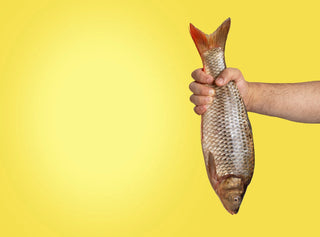

Aquaculture versus Agriculture: Who’s Got the Cleanest Act?
Now we’ve debunked those visions of gently wafting seaweed and coral reefs with fish that play peekaboo, switch the word marine for what this collagen source is mainly composed of and we are suddenly not quite so seduced - fish collagen. Suddenly, we don’t want a fish face mask or a souped up fishy cup of chamomile tea, if we want lobster bisque, we’ll order it straight! When you take a look at the specs that marine collagen wholesalers have for their products, under the odour section, you’ll find words such as ‘characteristic’. So, fishy, then. Don’t get us wrong, we love eating fish in our diets, bring on the omegas, afterall, but we’ve just absorbed the way that society uses ideas of fish as somehow suspicious and well, a little bit fishy, or, worse, unclean. No one wants to fragrance their house with Eau De Poisson, now, do they? It's the sort of food we warn our work colleagues that we are having for lunch as we watch the staffroom’s population diminish by half. Fish: it’s just not everyone’s cup of sea, sorry, tea, is it?
We’ve know that the oceans themselves aren’t as idyllic as we would like to think.
They are battling plastics, chemicals and oils and becoming a place for out of sight, out of mind dumping of rubbish. While the idea of the by-products of wild caught fish, such as marine collagen peptides, seems seductive, and environmentally friendly, we know that our oceans are struggling somewhat under the pressure that modern consumption puts them under. The answer must lie, we hear some cry, in aquaculture. Fish farms are actually as old as human settlements, although they sound like something a thoroughly modern Millie dreamt up.
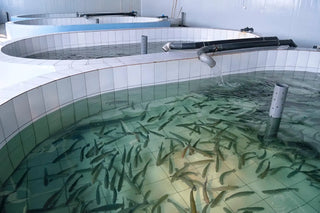

But, one of the potential problems with aquaculture comes from the fact that, obviously, captive fish need feeding.
While tilapia and pangasius are pretty omnivorous and will nibble at their greens in the form of aquatic plants, they’re also happily eat other marine creatures. This means they could be fed fishmeal. While your marine collagen may have come from a fish farm that has beautiful silver fish skin credentials, no fish mites there, thank you, the same cannot always be said of the feed the fish are given. Cao Ling, a researcher at Stamford University, says, ‘China is the largest importer of fish meal, accounting for one third of the total trade. Poor regulation, along with climate change and overfishing, are contributing to unsustainable exploitation’. The problem is so prevalent that China has its first non-governmental organisation, China Blue Sustainability Institute, which admits that many aquaculture farms in China do not employ sustainable practices causing overfishing of species to supply food for marine farms. Many Chinese fish farms are family owned and operate under the radar of any regulations. These same fish farms are guilty of releasing untreated water contaminated with fish waste, as well as leftover feed and medicines such as antibiotics back into the sea. These antibiotics are killing microbes in the oceans and reducing biodiversity. Curiosity would ask: are super-bacteria keeping a watchful eye, stroking their chins and preparing for something akin to world dominance, emerging from the oceans and marching straight into our food chains? Quite possibly/probably.
And don’t get us started on the pesticides that are often required in fish farms as these fish live in close quarters to each other, parasites cross contaminate easily. Additionally, talking of pesticides, fish are like sponges when it comes to pesticide polluted water and that isn’t just from the pesticides they might have been given as part of a treatment. Pesticide drift from agricultural farming can affect fish. Whereas the UK cattle industry had to wake up and clean up its act in the 1990s, aquaculture, in some parts of the world, is an industry that is struggling to self-regulate. Even the aquaculture industry admits that there could be a massive problem coming down the pipe in the way that fish is farmed. We already have Big Food and Big Pharma; the question is what’s keeping marine collagen from being produced by the marine equivalent: Big Fish?
Obviously, marine collagen companies can speak to the provenance of their own products; what we aim to do here is show you how, with marine collagen, the checklist for the product’s provenance is more complicated to trace and, with marine collagen, you have to look beneath the fish scales, beyond the swim bladder and into the umbrellas of the jellyfish, the oral feeding arms, as well as at the skin and bone.
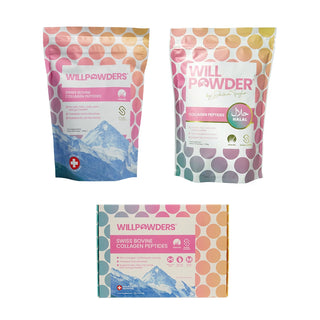

At WillPowders, it’s super simple:
Swiss grass feeds Swiss cattle whose hides are the byproduct used in hydrolysed bovine collagen peptides.
We suggest that it would take the marine collagen industry significantly more words to unpick what their marine creatures have been eating, where they’ve been eating it, and whether that food was a natural food source or feed from elsewhere, not to mention, which plastic-free, antibiotic-free bits of the ocean (is there such a thing?) it came from. That is, of course, if it came from an ocean at all - from our research, it’s mainly freshwater fish - those tilapia and pangasius fish - that end up in the great fishy food chain for marine collagen supplements. You’d be better off asking which fish farm or farms those fish skin and bones were sourced from. So, answers on a postcard, please, marine collagen industry!
Further Reading and Research
To read more about how pangasius are reared in aquaculture try Pangasius Fish: Profile, Size, Range, Traits, Growth, Facts
If you want to read more about fish farming and its potential problems, try here Diseases Suffered in Fish Farms
More Blogs
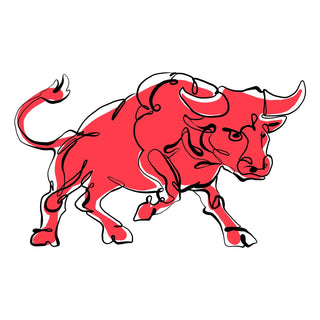
We Call Bull on Marine Collagen (And Cheap Bovine Collagen, For That Matter)
Collagen 101: The One In Which We Show Why Your Collagen Peptides Need to Come from Swiss Turf Not Questionable Surf
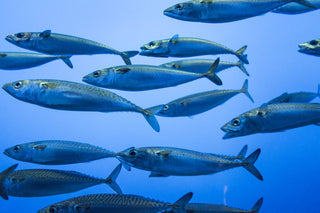
What is Collagen and what is the Difference between Bovine and Marine Collagen?
Collagen provides structure, support or strength to our skin, muscles, bones and connective tissues and unfortunately, it starts to decrease around the age of 30.
Disclaimer
Our blogs are written with love in the hope that they go some way in helping you feel like the rockstar you are, and whilst we do our due diligence, research like maniacs and fact check our stuff, we know everyone’s journey is different. They are intended to educate and empower you, not usurp medical advice. We would never advise you to stop, adjust, or modify any prescription medication without the direct supervision of your healthcare practitioner, but don’t be afraid to talk to your doctor about your new found knowledge, brought to you by the marvels of nature because they don't know everything! Blogs are always informed by Davinia but often written by a member of the team. Not all blogs reflect Davinia's experiences and sometimes provide alternative perspectives

